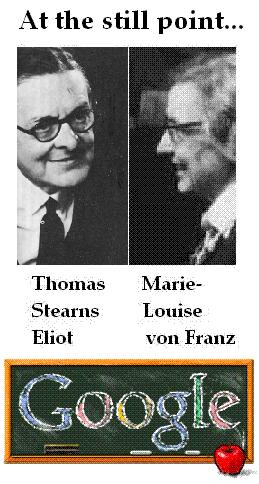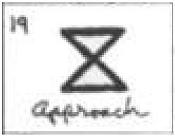A Dance Results
"Professor Krauss even uses many of the same decorations with which she festooned earlier volumes. Bataille’s photograph of a big toe, for example, which I like to think of as her mascot, reappears. As does her favorite doodle, a little graph known as a 'Klein Group' or 'L Schema' whose sides and diagonals sport arrows pointing to corners labeled with various opposing pairs: e.g., 'ground' and 'not ground,' 'figure' and 'not figure.' Professor Krauss seems to believe that this device, lifted from the pages of structuralist theory, illuminates any number of deep mysteries: the nature of modernism, to begin with, but also the essence of gender relations, self-consciousness, perception, vision, castration anxiety, and other pressing conundrums that, as it happens, she has trouble distinguishing from the nature of modernism. Altogether, the doodle is a handy thing to have around. One is not surprised that Professor Krauss reproduces it many times in her new book."
From
Drid Williams,
The Semiotics of Human Action,
Ritual, and Dance:

|
A Jungian on this six-line figure:
"They are the same six lines
that exist in the I Ching….
Now observe the square more closely:
four of the lines are of equal length,
the other two are longer….
For this reason symmetry
cannot be statically produced
and a dance results."
— Marie-Louise von Franz,
Number and Time (1970) |
and to the Greimas "semiotic square":
"People have believed in the fundamental character of binary oppositions since at least classical times. For instance, in his Metaphysics Aristotle advanced as primary oppositions: form/matter, natural/unnatural, active/passive, whole/part, unity/variety, before/after and being/not-being.* But it is not in isolation that the rhetorical power of such oppositions resides, but in their articulation in relation to other oppositions. In Aristotle's Physics the four elements of earth, air, fire and water were said to be opposed in pairs. For more than two thousand years oppositional patterns based on these four elements were widely accepted as the fundamental structure underlying surface reality….
 The structuralist semiotician Algirdas Greimas introduced the semiotic square (which he adapted from the 'logical square' of scholastic philosophy) as a means of analysing paired concepts more fully…."
The structuralist semiotician Algirdas Greimas introduced the semiotic square (which he adapted from the 'logical square' of scholastic philosophy) as a means of analysing paired concepts more fully…."
— Daniel Chandler, Semiotics for Beginners.
* Compare Chandler's list of Aristotle's primary oppositions with Aristotle's list (also in the Metaphysics) of Pythagorean oppositions (see Midrash Jazz Quartet).







 .
. .
. .
.




 The structuralist semiotician Algirdas Greimas introduced the semiotic square (which he adapted from the 'logical square' of scholastic philosophy) as a means of analysing paired concepts more fully…."
The structuralist semiotician Algirdas Greimas introduced the semiotic square (which he adapted from the 'logical square' of scholastic philosophy) as a means of analysing paired concepts more fully…."




